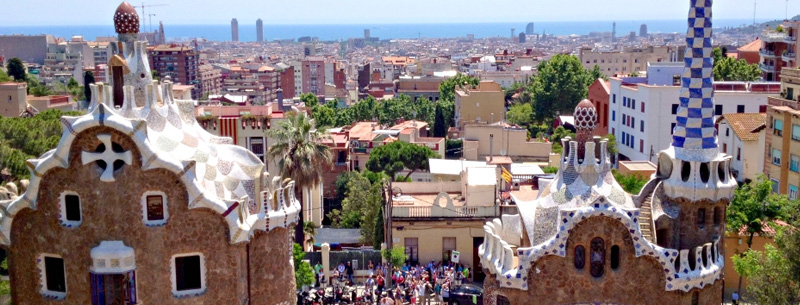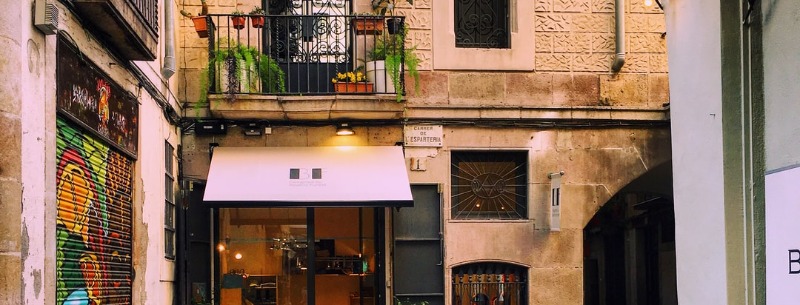2024 Living in Barcelona Costs
Living in Barcelona has far more benefits than drawbacks. It is an architecturally stunning location, always sunny, and culturally rich, with both a local Catalan-Spanish mix and foreign influences brought by a large immigrant population. Because there is always something going on and the streets are filled with noises and smells from all over the world, living here makes you feel like you are in the center of the universe. It’s not too big or too small, and its proximity to the beach and mountains make it ideal for nature and outdoor sports enthusiasts. However, in comparison to other Spanish and European cities, it is also very expensive.

Where to live in Barcelona?
Each of Barcelona’s quarters has its own architecture and vibe, and each has a different selection of bars, restaurants, and shops frequented by different crowds. So, before you decide to settle down in Barcelona and inquire about the cost of living, you should consider which of these distinct areas would best suit your lifestyle, what conveniences you require, and what inconveniences you are willing to accept.
The closer to the sea you live the cheaper it is
Unlike in most European capitals, living in the heart of Catalonia’s capital is inexpensive. The old town of Barcelona (Ciutat Vella) is a picturesque district with narrow streets and old architecture, where Roman ruins compete for space with Gothic churches. It’s a lively place that’s popular with tourists who want to spend their time in open-air cafes and markets. It’s also where most expats choose to live when they first move to the city because it’s very convenient – the shops are close, the rent is low, the transportation options are excellent, and after all, you’ve come here to live IN Barcelona, not on its outskirts.
There are 4 main neighborhoods classified as the old town:
Barceloneta
This barrio neighboring the beach is always filled with tourists who are lured here by the sun, sand and the smell of paella. The quarter never sleeps due to the proximity of clubs and bars and there are always people in the streets or on rooftops here. The apartments in this area are small, their windows are usually single-glazed and there is no central heating, so as you can imagine it gets pretty cold in the winter. And it’s not uncommon to find an occasional cockroach in your flat, as they are, like the tourists, attracted to Barceloneta by the smell of food.
Renting a small single-bedroom apartment in Barceloneta will cost you around $700-900 a month. For a 2 or 3 bedroom apartment you are looking to pay between $1000-2500.
If you eat out, rather than cook, you will spend between $16-32 for a full menu (starter, 1st and 2nd course, dessert and drink).
El Raval
El Raval is a rather seedy area of Barcelona and home to the biggest immigrant populations in the city (mostly from India and Pakistan). Here you will also find the biggest selection of quirky artisan shops. It is architecturally similar to Barceloneta and likewise filled with the constant noise produced by tourists and the street life. Other disadvantages of living in Raval, where we have spent the last 4 years, include petty crime and prostitution in the streets. But it’s also the cheapest place in the city, the best connected with other parts of Barcelona and you can find here anything you need at any point of day or night.
- For a small single-bedroom apartment in Raval you are likely to pay around $700-1000 a month, while for a 2 or 3 bedroom apartment the prices lay between $1100-1900.
- For a full menu you are looking at paying around $13-19 in Raval. Here you will find the cheapest beer in town and you will pay as little as $1.20-2.00 if you buy it in a Chinese bar or a Pakistani kebab house.
El Barri Gótic
El Barri Gótic is the most picturesque out of Barcelona’s quarters and the splendour of its Gothic architecture is simply indescribable. It’s also the most touristy place in the city where you will find the biggest amount of fancy bars and restaurants with slightly elevated prices. Petty crime is very common here as well, so keep your eyes peeled if you decide to settle down here. Other disadvantages of living here, apart from the all-embracing noise, include the smell of pee and vomit in the streets left by drunken tourists and locals likewise.
- For a small single-bedroom apartment in El Gótic you will pay around $820-1000 a month. A 2-3 bedroom apartment would cost you around $1200-1900 monthly.
- For a menu in a restaurant you are looking to pay between $19-32.
El Borne (La Rivera)
After El Gótic is the loveliest, most touristy neighbourhood of Barcelona, full of chilled cafes, great restaurants and bars and a place that’s becoming trendier and more sought-after than ever. The disadvantages of living here are similar to the ones in El Gótic.
- A small single-bedroom apartment will cost you here $800-1600, while a slightly bigger 2-3 bedroom one: $1600-3200.
- For a menu in a restaurant you are looking to pay between $19-32.
- In the whole of the old town, your monthly bills (water, gas, electricity) will cost you around $130-300 and the internet costs around $40-50/month.
- If you buy your food in the supermarket, you will spend around $150-300 a month per person.
- For a monthly gym membership you will pay around $40-50.
Getting away from the noise of the old town
Those who value their peace and quiet should move away from the lively old town into the areas further north, where passages are wider, apartments are bigger and more convenient, designer boutiques become more common and life costs more. This is the favorite area of Catalan middle-classes and you will spot fewer tourists and immigrants here.
L’Eixample
Built in the middle of the 19th century, it is a great example of modernist architecture and urban planning, where wide boulevards create grids of perfectly proportional and equal blocks. Proprieties here are larger, better-maintained, have high ceilings and are equipped with elevators and central heating (which isn’t the case in the old town).
- For a small 1-bedroom apartment you will pay here around $820-1000/month, while a bigger 2-3 bedroom flat will cost you around $880-2000/month.
- In general there are fewer restaurants and bars here as everyone tends to head for the old town to eat but for a menu you’d pay around $19-32.
Gracia
Gracia is the bohemian or hipster part of Barcelona, filled with quirky bars and restaurants dotted around its narrow streets. Like in the old town, you will find here people drinking in the streets and enjoying themselves until the early morning hours. The housing conditions here also resemble la Ciutat Vella more than L’Eixample but the cost of living is slightly pricier and the connections with other parts of town are worse.
- A small single-bedroom apartment will cost you here $880-1300, while a slightly bigger 2-3 bedroom one: $1100-2600.
- For a menu you will pay the standard $19-32 but if you go out for drinks you will generally pay more than in the old town.
- In this middle-class district, your monthly bills (water, gas, electricity) will cost you around $200-350 and the internet costs around $40-50/month.
- If you buy your food in the supermarket, you will spend around $200-400 a month per person.
- For a monthly gym membership you will pay around $60.
- For those who value more prestigious locations and are prepared to pay more
If you have a bit more money and would like to have for neighbors a slightly posher crowd, you should choose the northernmost areas of town as your home.
Sarrià and Zona Alta
Here you can find elegant apartment blocks, spacious mansions and private schools. There are a lot of green spaces and it’s far away from the hassle and bustle of the center of town; and you certainly won’t find many tourists here. The disadvantages include the lack of good restaurants and bars but if you live here you can probably afford your own means of transport, so that’s not really a problem, you can dine wherever you want.
- For a 1-bedroom flat you are looking to pay around $1000, while for a 2-3 bedroom flat or house $1200+.
For current property prices in Barcelona and the rest of Spain got to: http://www.idealista.com/en/
Living outside Barcelona and transport costs
Many people, especially the richer middle-classes, tend to choose locations away from Barcelona since the city is well connected with other parts of Catalonia. These include the nearby towns of Castelldefels, Sant Cugat and Sitges, to name just a few.
As I mentioned earlier, Barcelona has an excellent and cheap public transport system. For a 30-day all-transport travel card (zone 1) you will pay only $55 and it covers all of Barcelona’s districts. If you live in the suburbs, you will probably need a zone 2 travel card, which will cost you $90. If you like cycling, you can enjoy Barcelona’s public bike system called Bicing for as little as $60/year. If you have your own car but don’t own a garage, you will spend $25/24h to keep it in one of the city’s many indoor car parks.
Side note: If you earn your living as an English teacher, you will be earning between $1100-1600 a month.
We rented a tiny two bedroom apartment last year in the dodgiest part of El Raval for $760 with electricity included. It’s probably the best deal you can find in the city but our neighbors were drug dealers so that’s the price you pay.
